Androgen-induced activation of gonadotropin-regulated testicular RNA helicase (GRTH/Ddx25) transcription: essential role of a nonclassical androgen response element half-site
- PMID: 22331472
- PMCID: PMC3318589
- DOI: 10.1128/MCB.06002-11
Androgen-induced activation of gonadotropin-regulated testicular RNA helicase (GRTH/Ddx25) transcription: essential role of a nonclassical androgen response element half-site
Abstract
GRTH, a testis-specific member of the DEAD-box family of RNA helicases essential for spermatogenesis, is present in Leydig cells (LC) and germ cells. In LC, it exerts an autocrine negative regulation on androgen production induced by gonadotropin. GRTH is transcriptionally upregulated by gonadotropin via cyclic AMP/androgen through androgen receptors (AR). For studies of GRTH regulation by androgen in LC, we utilized in vitro/in vivo models. Androgen-induced GRTH expression was prevented by an AR antagonist. Two putative atypical ARE half-sites are present at bp -200 and -827 (ARE1 and ARE2). Point mutation of ARE2 prevented androgen-induced AR binding/function and upregulation of GRTH transcription. Chromatin immunoprecipitation (ChIP) assays showed recruitment of AR, SRC-1, Med-1, transcription factor IIB (TFIIB), and polymerase II (PolII) to GRTH ARE2 (bp -980/-702) and to the promoter region (bp -80/+63). ChIP3C assays revealed short-range chromosomal looping between AR/ARE2 and the core transcriptional machinery at the promoter. Knockdown of Med-1 and/or SRC-1 demonstrated the presence of a nonproductive complex which included AR, TFIIB, and PolII and the essential role of these coactivators in the transcriptional activation of GRTH. Our findings provide new insights into the molecular mechanism of androgen-regulated transcription in LC.
Figures
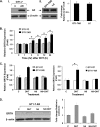

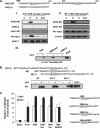

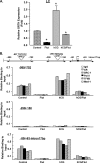
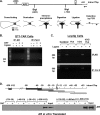
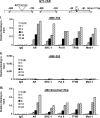
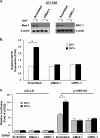


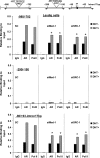


Similar articles
-
Gonadotropin Regulation Testicular RNA Helicase, Two Decades of Studies on Its Structure Function and Regulation From Its Discovery Opens a Window for Development of a Non-hormonal Oral Male Contraceptive.Front Endocrinol (Lausanne). 2019 Aug 29;10:576. doi: 10.3389/fendo.2019.00576. eCollection 2019. Front Endocrinol (Lausanne). 2019. PMID: 31555207 Free PMC article. Review.
-
A 5'-flanking region of gonadotropin-regulated testicular RNA helicase (GRTH/DDX25) gene directs its cell-specific androgen-regulated gene expression in testicular germ cells.Endocrinology. 2013 Jun;154(6):2200-7. doi: 10.1210/en.2012-2230. Epub 2013 Apr 1. Endocrinology. 2013. PMID: 23546600 Free PMC article.
-
Gonadotropin-regulated testicular RNA helicase (GRTH/DDX25) gene: cell-specific expression and transcriptional regulation by androgen in transgenic mouse testis.J Cell Biochem. 2010 Apr 15;109(6):1142-7. doi: 10.1002/jcb.22493. J Cell Biochem. 2010. PMID: 20108248
-
Germ Cell Nuclear Factor (GCNF/RTR) Regulates Transcription of Gonadotropin-Regulated Testicular RNA Helicase (GRTH/DDX25) in Testicular Germ Cells--The Androgen Connection.Mol Endocrinol. 2015 Dec;29(12):1792-804. doi: 10.1210/me.2015-1198. Epub 2015 Oct 20. Mol Endocrinol. 2015. PMID: 26484580 Free PMC article.
-
Gonadotropin-regulated testicular RNA helicase (GRTH/DDX25): a multifunctional protein essential for spermatogenesis.J Androl. 2010 Jan-Feb;31(1):45-52. doi: 10.2164/jandrol.109.008219. Epub 2009 Oct 29. J Androl. 2010. PMID: 19875492 Free PMC article. Review.
Cited by
-
What Does Androgen Receptor Signaling Pathway in Sertoli Cells During Normal Spermatogenesis Tell Us?Front Endocrinol (Lausanne). 2022 Feb 24;13:838858. doi: 10.3389/fendo.2022.838858. eCollection 2022. Front Endocrinol (Lausanne). 2022. PMID: 35282467 Free PMC article. Review.
-
Gonadotropin Regulation Testicular RNA Helicase, Two Decades of Studies on Its Structure Function and Regulation From Its Discovery Opens a Window for Development of a Non-hormonal Oral Male Contraceptive.Front Endocrinol (Lausanne). 2019 Aug 29;10:576. doi: 10.3389/fendo.2019.00576. eCollection 2019. Front Endocrinol (Lausanne). 2019. PMID: 31555207 Free PMC article. Review.
-
Linking Phospho-Gonadotropin Regulated Testicular RNA Helicase (GRTH/DDX25) to Histone Ubiquitination and Acetylation Essential for Spermatid Development During Spermiogenesis.Front Cell Dev Biol. 2020 May 15;8:310. doi: 10.3389/fcell.2020.00310. eCollection 2020. Front Cell Dev Biol. 2020. PMID: 32478068 Free PMC article.
-
A 5'-flanking region of gonadotropin-regulated testicular RNA helicase (GRTH/DDX25) gene directs its cell-specific androgen-regulated gene expression in testicular germ cells.Endocrinology. 2013 Jun;154(6):2200-7. doi: 10.1210/en.2012-2230. Epub 2013 Apr 1. Endocrinology. 2013. PMID: 23546600 Free PMC article.
-
Blockade of GRTH/DDX25 Phosphorylation by Cyclic Peptides Provides an Avenue for Developing a Nonhormonal Male Contraceptive.J Med Chem. 2021 Oct 14;64(19):14715-14727. doi: 10.1021/acs.jmedchem.1c01201. Epub 2021 Oct 2. J Med Chem. 2021. PMID: 34601876 Free PMC article.
References
-
- Belakavadi M, Fondell JD. 2006. Role of the mediator complex in nuclear hormone receptor signaling. Rev. Physiol. Biochem. Pharmacol. 156: 23–43 - PubMed
-
- Bennett NC, Gardiner RA, Hooper JD, Johnson DW, Gobe GC. 2010. Molecular cell biology of androgen receptor signalling. Int. J. Biochem. Cell Biol. 42: 813–827 - PubMed
-
- Briegel K, et al. 1993. Ectopic expression of a conditional GATA-2/estrogen receptor chimera arrests erythroid differentiation in a hormone-dependent manner. Genes Dev. 7: 1097–1109 - PubMed
-
- Collins LL, et al. 2003. The androgen receptor in spermatogenesis. Cytogenet. Genome Res. 103: 299–301 - PubMed
-
- Dekker J, Rippe K, Dekker M, Kleckner N. 2002. Capturing chromosome conformation. Science 295: 1306–1311 - PubMed
MeSH terms
Substances
LinkOut - more resources
Full Text Sources
Other Literature Sources
Molecular Biology Databases
Research Materials
Miscellaneous
